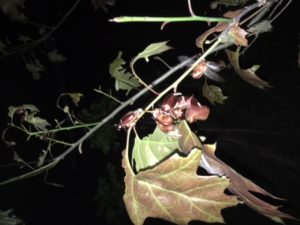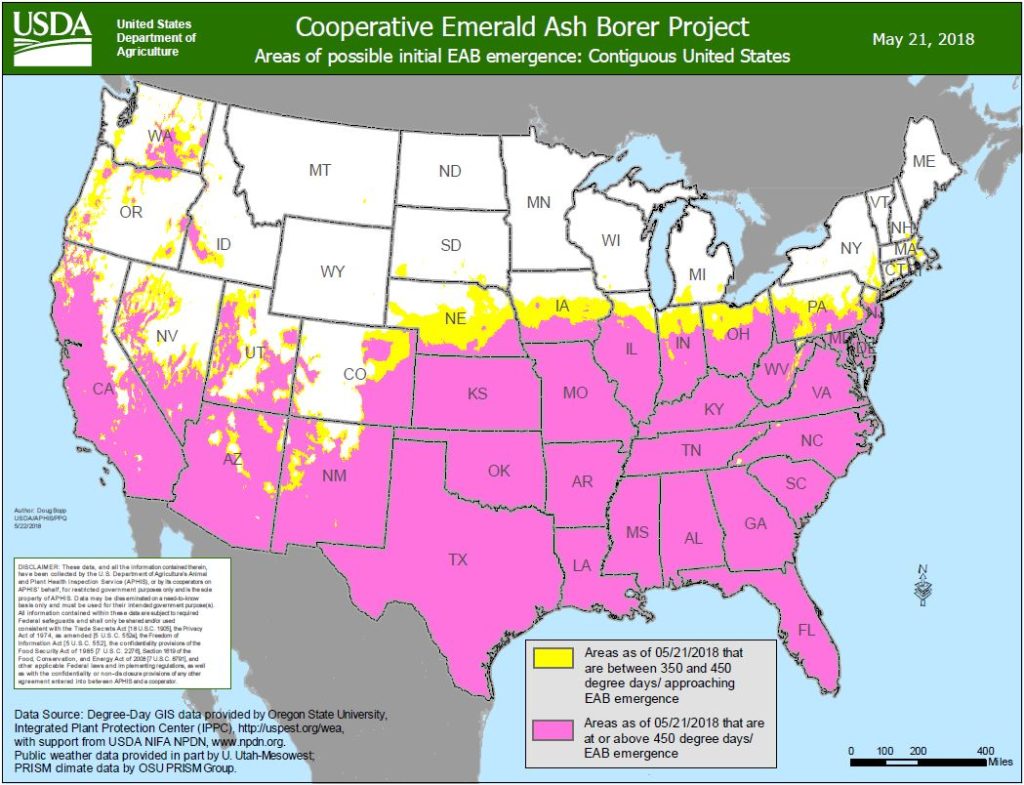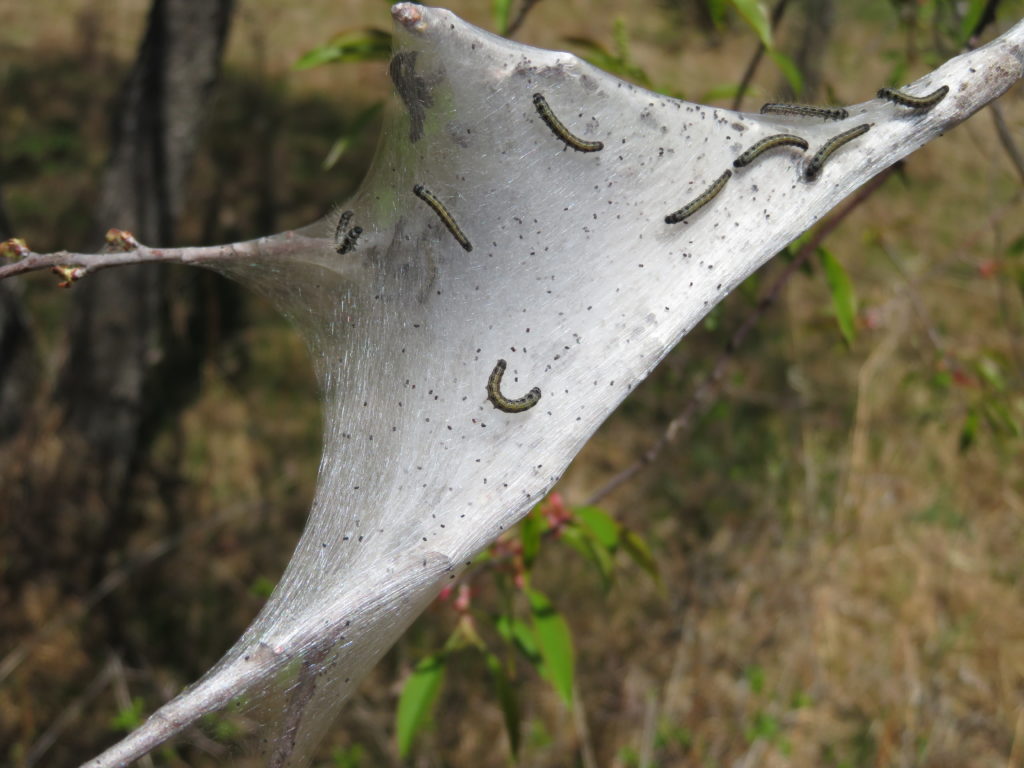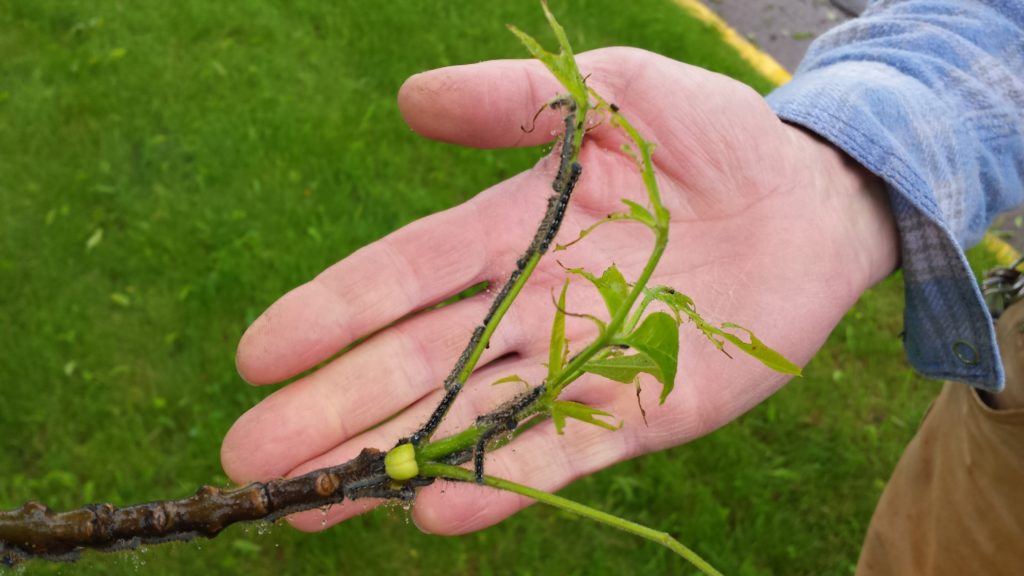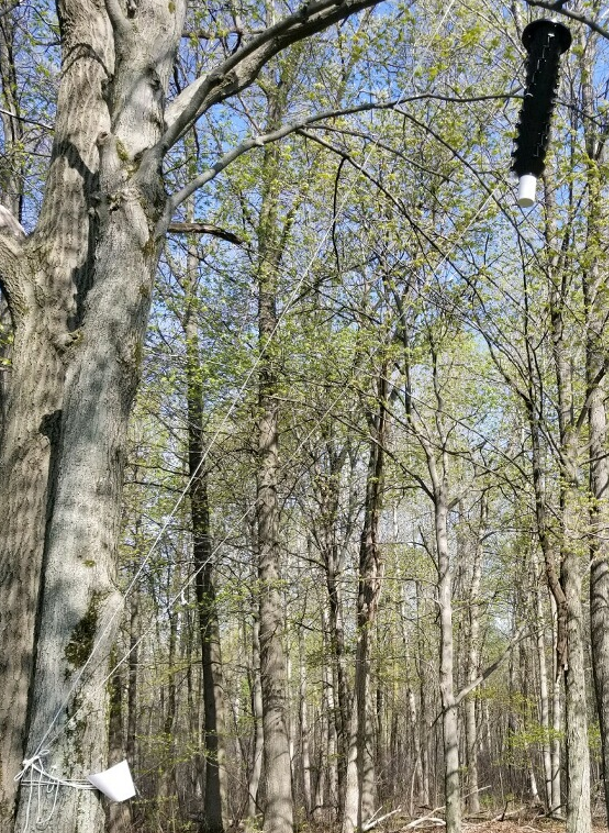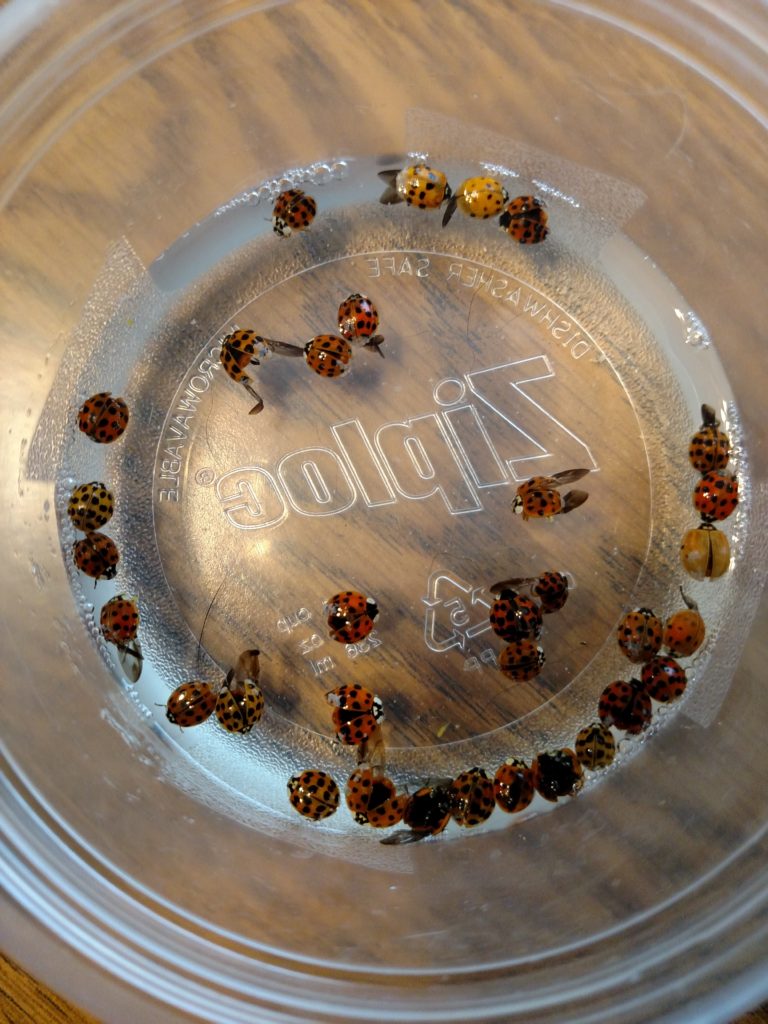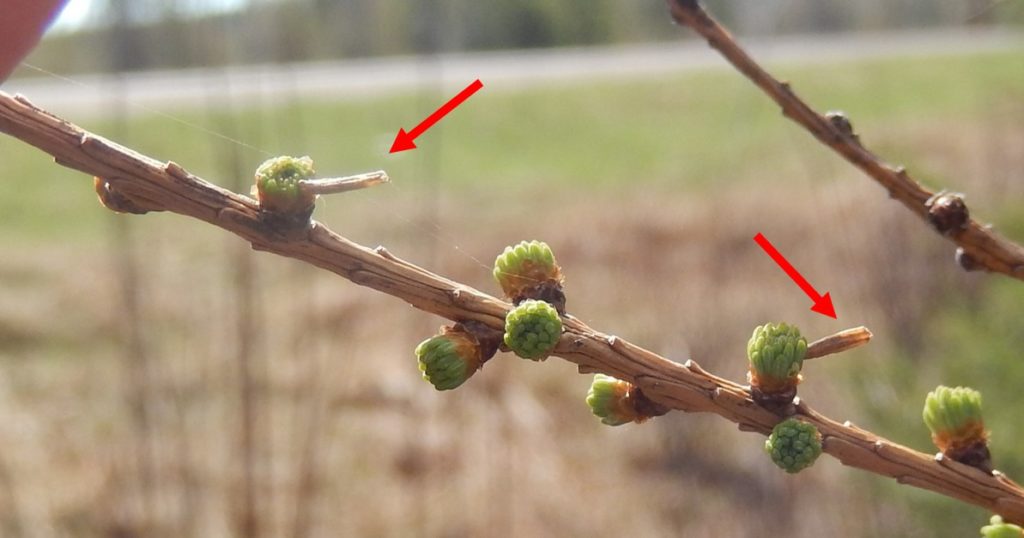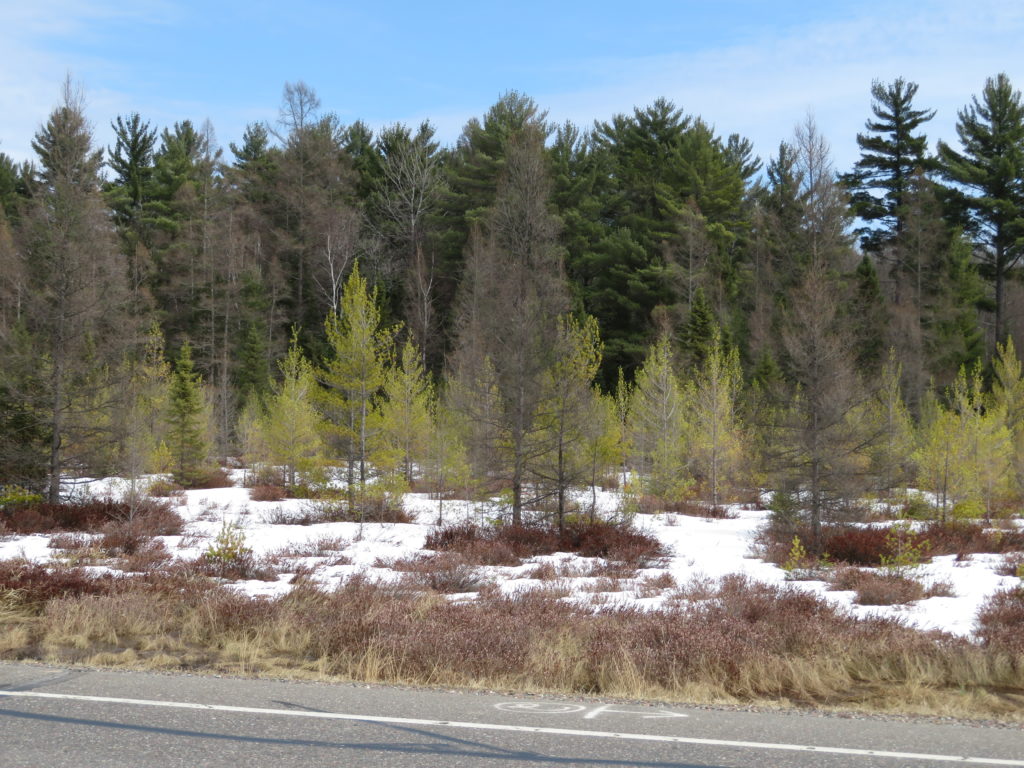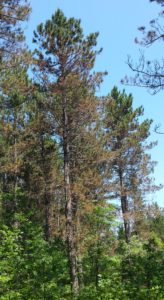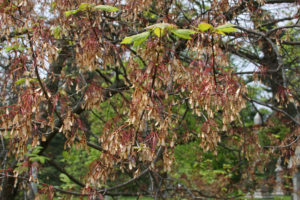
Heavy seed production by a red maple. The Ohio State University.
By Todd Lanigan, forest health specialist, Eau Claire. todd.lanigan@wisconsin.gov, 715-210-0150 and Paul Cigan, forest health specialist, Hayword. Paul.Cigan@wisconsin.gov, 715-416-4920
There have been reports that some elm and maple trees in the state have fewer leaves than normal this spring. The likely reason is that several elms and maples produced an unusually large amount of seed this year, which trees do periodically. During a heavy seed production years, the tree will produce fewer leaves, which may make it appear sparse. Continue reading “Sparse-leafed elms and maples”

